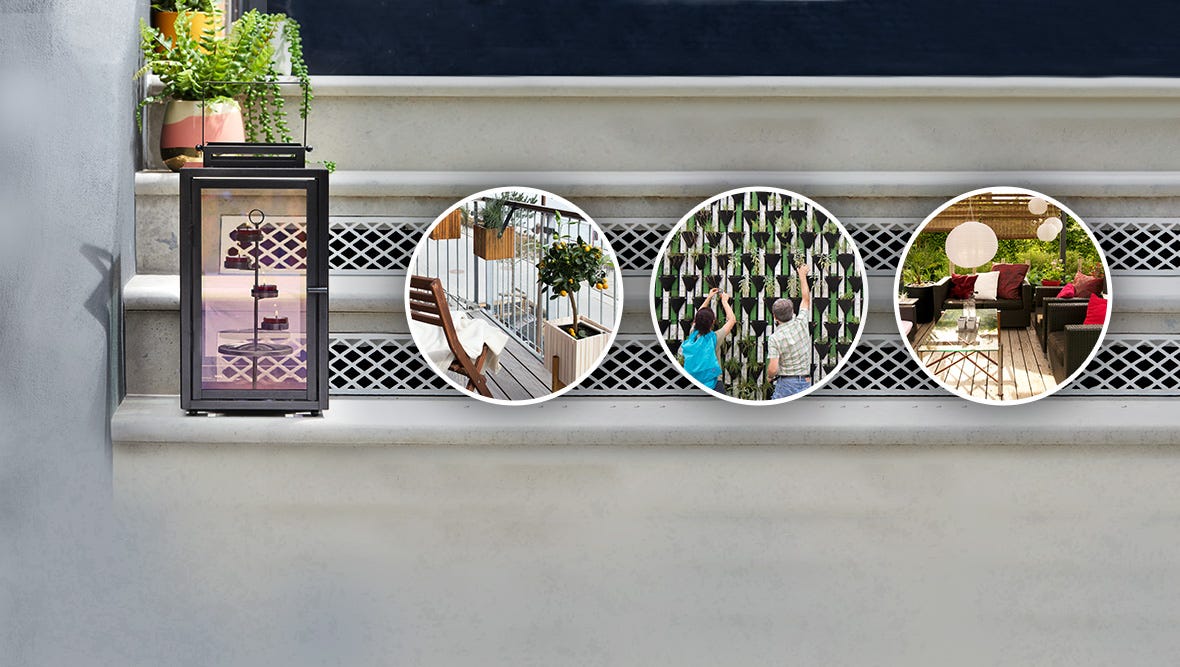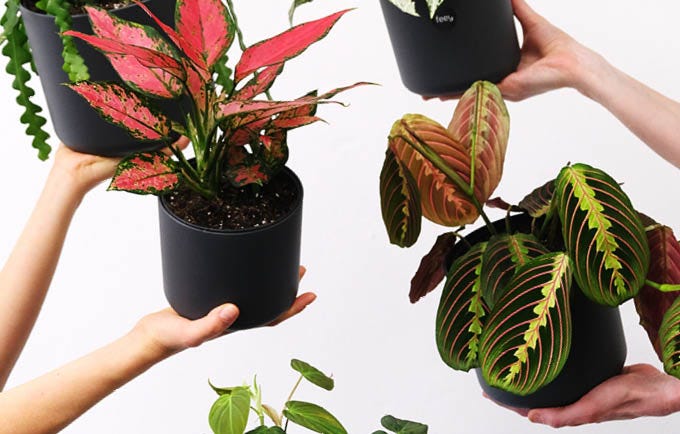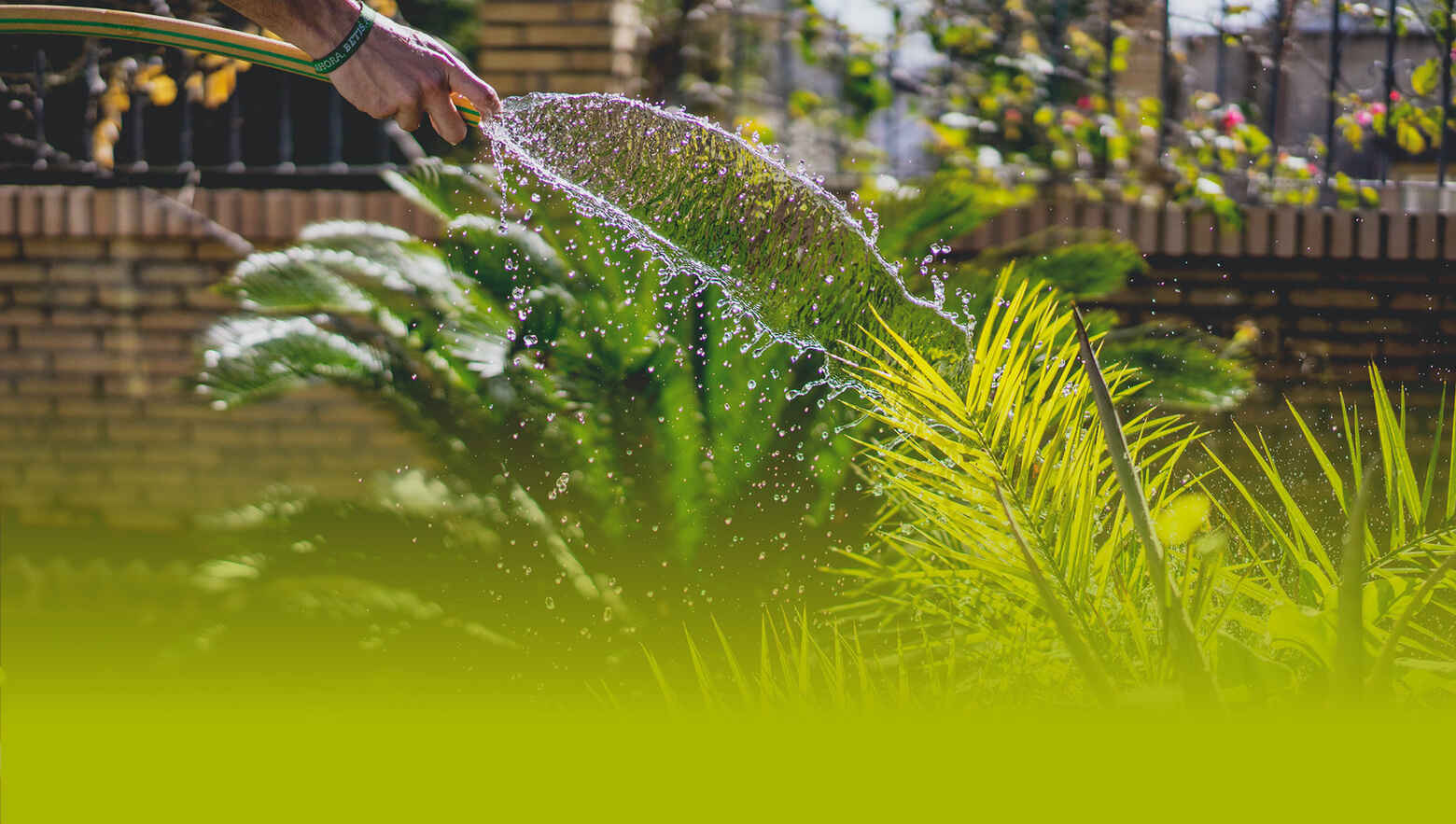A huge step towards a more eco-friendly garden comes from limiting human intervention wherever possible, which helps to encourage plant growth, keeps pollinators happy and ensures that more wildlife can enjoy your space alongside you.
Rewilding your garden offers a chance to reduce your carbon footprint by allowing for an area to go back to its original and natural form. Although some people allow their gardens to become totally overgrown, it’s possible for you to section off a space that looks good and is beneficial to nature.

What is rewilding?
The concept of rewilding comes from the idea that nature should be left to look after itself. But this doesn’t mean that you should just let your garden become overgrown to be more eco-friendly. There are many techniques that allow for your garden to still look good while being friendly to Mother Earth.
Simple changes like ditching pesticides, herbicides and fungicides means that insects can be happier and allow a natural ecosystem to thrive. Weeding by hand is hard work but benefits your garden more than you’d think (you could even let some weeds flourish as they make for excellent insect food!) You can then encourage this ecosystem by building a bird or bat box so that there’s a good balance of insects within your garden.
Rewilding isn’t just about letting animals into your garden though, it’s just as important to create an environment for your plants to prosper. One of the many forms of rewilding includes allowing pollinator-friendly plants to take over a space.
Letting nature take its course doesn’t mean you can’t cultivate a theme when you’re rewilding your garden, though. We’ve come up with four ideas that you can use that will complement any style or space. We haven’t forgotten about plant-care tips either, read below to find your favourite style.

A Natural Look
A background of green flowers makes for an idyllic natural setting. Neutral whites and blues should be interspersed for this peaceful look. Our eyes are able to detect more nuances in green than any colour, which means that any contrasting tones will be much easier to see.
White is a timeless colour, so you should look to use hydrangeas and lilies for this to help the blue tones pop through blue irises and delphiniums. For the green base, the simplicity of tall grass will allow the rest of your plants to stand out when they blossom.
Blue Iris - A perennial flower that can bloom a few times a year in the right conditions. Plant them at least two feet apart in a sunny spot during late summer to ensure they get enough light.
Delphinium - Keep these fussy plants out of the wind where possible, because they can grow so high they need to be planted with a stake to keep them upright. Ensure they get plenty of water during drier summers.
Hydrangeas - A diverse plant with a range of shapes and sizes, the best time to plant is in the spring or autumn. They need regular watering during their first summer and the dead leaves offer protection to young blooms throughout the winter.
Tall Grass - This popular plant can thrive in pretty much any soil if you pick the right one, with varieties that grow up to two metres high. Ideally planting them in the spring allows them to bed themselves in over the summer months.
Boho Mix
Go boho in your garden with a mixture of purples, oranges and yellows. These rich tones make for a bold and bright colour palette. Catch the eye with the sunshine of orange and yellow against the contrasting purples. Ensure simplicity around your rewilding area for this look as you don’t want your garden to look busy.
For your bright yellows and oranges, plants like coreopsis, daylilies and potentilla are an ideal blend of tall and short plants to give variety to your garden. Lavender is a classic gentle purple plant which can grow up to two feet tall, while the perennial false indigo plant has been known to several beautiful species and is a super easy bush to keep alive after the first couple of years.
Coreopsis - These low maintenance plants make for a perfect joyful variety to complete your theme. They can grow up to two feet if they get regular water in the first year, after that they are completely drought-tolerant.
Daylilies - Daylilies tend to bloom for weeks thanks to each stem having up to twelve buds. Keep them away from weeds in their first year of growth and plant them in the spring so they can establish themselves ahead of the winter months.
Potentilla - This shrub creates a low-maintenance green shrub which blooms into stunning yellow flowers that stay well into the autumn. Avoid watering them unless absolutely necessary, but they need regular pruning to ensure they bloom every year.
Lavender - Because lavender is a Meditteranean plant, it requires at least six hours of sunlight per day. It’s hard to grow from seed without perfect conditions so buy a small plant to get into warm spring soil. Cover with a winter mulch if you live in a colder climate.
False indigo - Plant in full sun areas that don’t get much moisture. Once the roots are settled post-spring you can leave this plant to itself and allow it to reach its one metre-plus potential.
Warm and Inviting
Green is the base colour again for this theme, as the deep colour allows the rest of the plants to stand out. You want to avoid the rest of the plants from clashing though, so ensure the colours are similar. We recommend a fiery red which is striking and bold alongside calming pink to fully complement the whole look.
Once again long grass works perfectly for your initial green layer, while the striking red of poppies will stand out perfectly against it. Achilleas are synonymous with border gardens and attract a host of pollinators, including hoverflies. Complete the look with exotic-loking kniphofias, late-blooming hellfire crocosmias and diverse pink dahlias which come in a stunning variety of shapes and sizes.

Poppies - Mix the seeds with sand to make sure they spread evenly throughout your soil when planting. Ensure they’re getting plenty of sun without hot temperatures as this can damage them. They produce their own seeds every year without any assistance so can be left to regrow.
Achilleas - Can be planted in sun or partial shade. The ‘Paprika’ doesn’t grow as tall as its yellow variety, but the stunning pink flower makes it perfect to live in the middle of a border. This unfussy plant will grow well in the sun or shade.
Kniphofias - The ‘Red Hot Poker Plant’ needs sun and as much space as possible to fulfil its full size potential. It attracts insects and birds to your garden thanks to its sweet pollen and needs regular watering to keep it healthy during the winter.
Crocosmias - This South African plant prefers sun wherever possible, but in colder regions try and keep it sheltered to encourage growth. They flower from June to late summer thanks to watering in drier months.
Dahlias - This fussy plant needs TLC to survive the winter but is otherwise a beautiful summer and autumn bloomer. Ensure you’re planting them after the last frost while the spring soil warms up, give plenty of water throughout the dry months.
Pretty Pastels
Soft neutral shades of prime colours ensure that these inviting colours don’t clash in your garden. Think of tones that are reminiscent of quintessential cottage gardens, a light rainbow of colours that brings soft technicolour into your newly rewilded space.
Echinacea is one of the most popular worldwide herbs, it’s a pastel pink member of the daisy family. Complementary flowers for this plant include the Iris, which comes in a variety of pastel colours, the most common being lavender, purple, white and yellow. The Meconopsis blends in with a stunning blue summer flower for this look, while the classic spring Daffodil is the perfect accompaniment thanks to its pale yellow colourway.
Echinacea - The ‘Coneflower’ is a tough plant that encourages plenty of wildlife into your garden. They will reach up to four feet in height if planted in rich soil but can survive any condition. They can take up to two years to bloom so have plenty of patience!
Irises - Once established the iris barely needs watering unless you go through an extremely dry summer. They’ll flower in spring, summer and winter providing they get enough sunlight, but try not to disturb the bulbs for at least four years.
Meconopsis - The Blue Himalayan plant can be extremely fussy and need perfect conditions to thrive. Once they’ve flowered it’s essential to dead-head them as they can die from the sheer effort of seeding every year!
Daffodil - This spring-blooming plant needs to be planted during the autumn months. Make sure to pick the biggest, healthiest bulbs that haven’t been dried out. Over time they start producing their own bulbs so will begin to regrow wherever you initially plant them.
Discover more of our latest collection here, find your perfect outdoor candle here.













